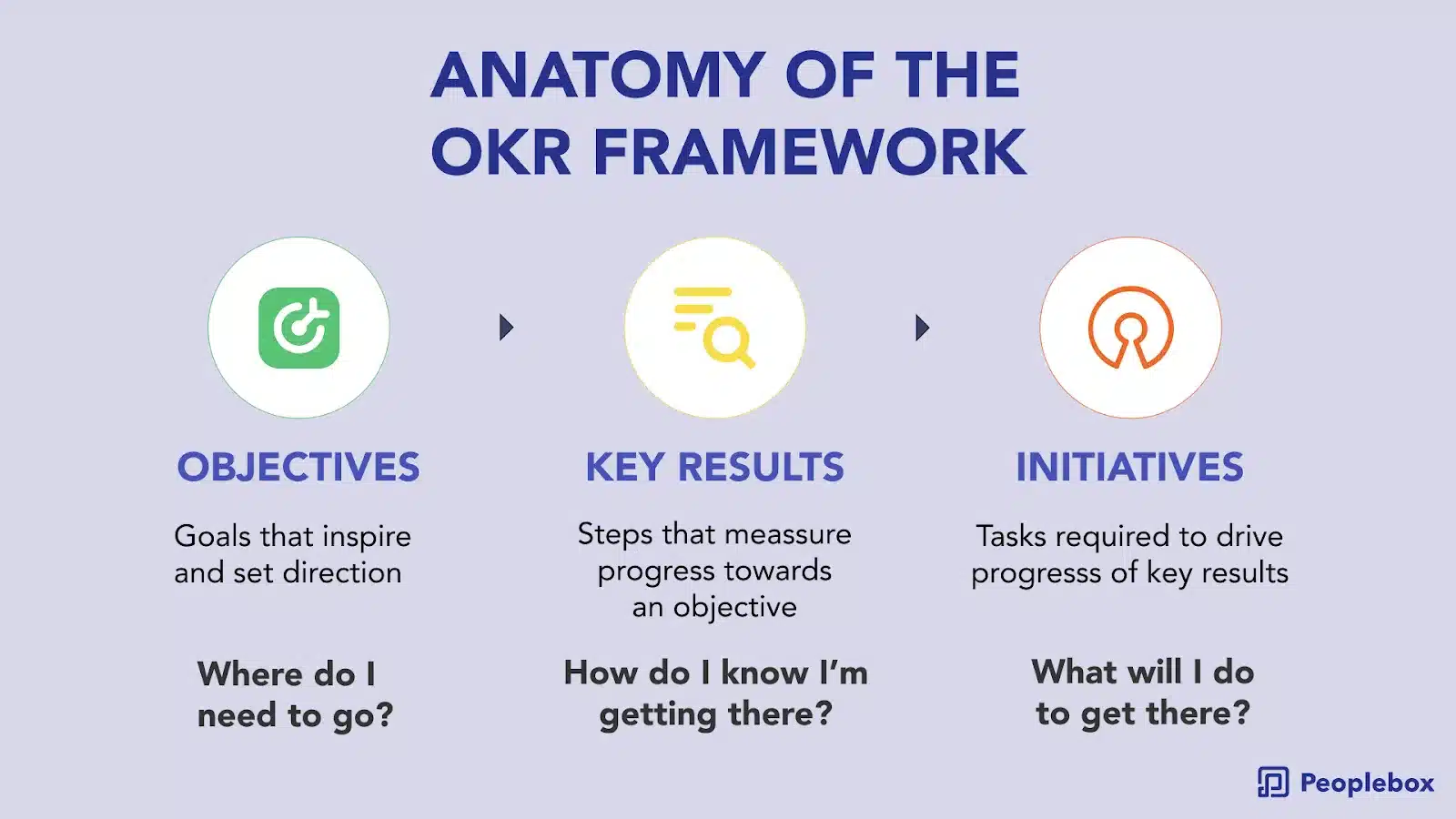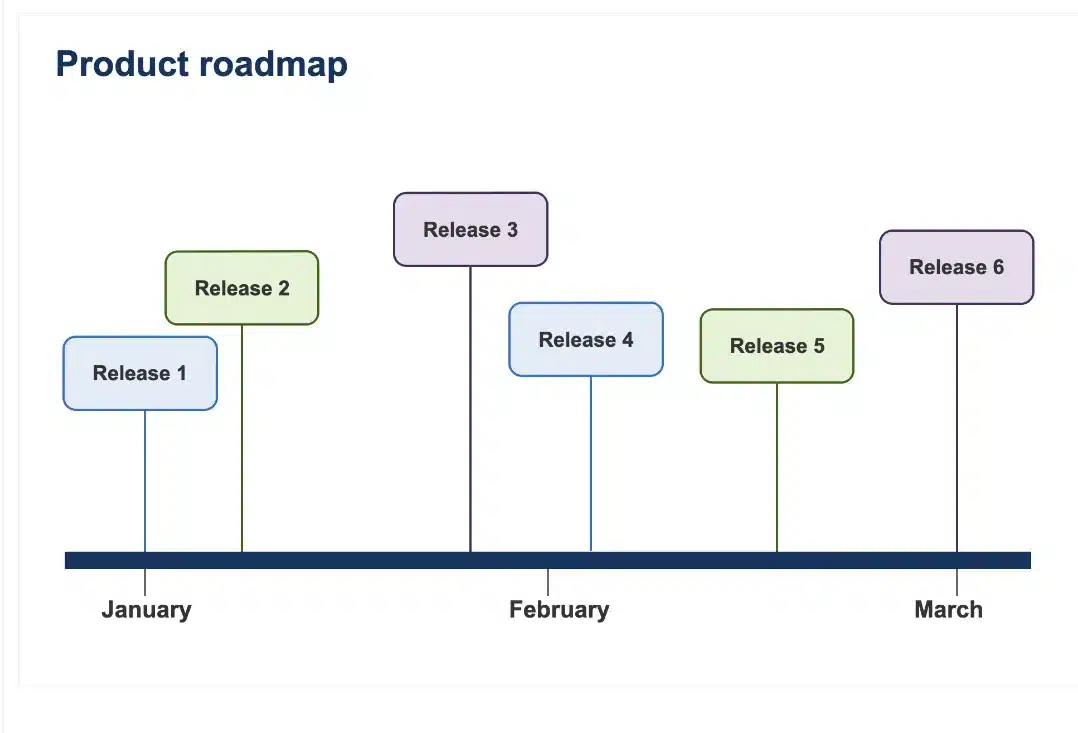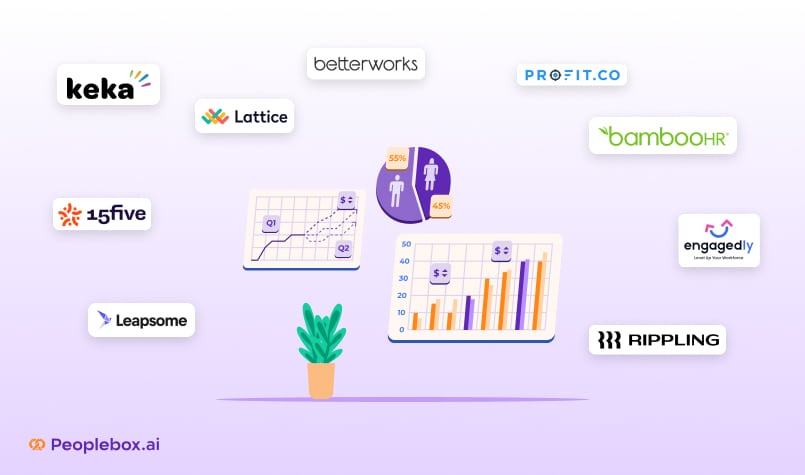As a product leader, you’re faced with the challenge of keeping your team on track towards achieving the company’s goals while also staying adaptable to changing market demands. Two tools that are often used to help with this task are OKRs and product roadmaps. However, when it comes to choosing between the two, many product leaders find themselves in a conundrum.
Both OKRs and product roadmaps have their own benefits and drawbacks, and it can be challenging to determine which one is the best fit for your team.
In this blog post, we’ll explore the differences between OKRs and product roadmaps, and help you understand how they can work together. By the end of this post, you’ll have a better understanding of how to leverage these tools to help your team achieve its goals and deliver successful products.
What Is OKR and Product Roadmap?
OKR (Objectives and Key Results)
OKR is a widely adopted goal-setting framework that has proven its efficacy in promoting organizational alignment and driving progress towards key business objectives. It involves setting specific, measurable, and time-bound objectives that are challenging yet attainable, and identifying key results that serve as quantifiable metrics of progress towards those objectives. By aligning individual and team efforts towards common goals, OKRs foster a culture of accountability and promote cross-functional collaboration.

Product roadmap
A product roadmap is a high-level strategic plan that outlines the vision, goals, and timeline for a product’s development. It typically includes information about upcoming features, enhancements, and improvements, as well as any technical, resource, or budgetary constraints that may impact the product’s delivery.
A product roadmap helps to ensure that a product is developed in a systematic and deliberate manner, with a clear vision for its future evolution.
It also serves as a communication tool for product managers, developers, stakeholders, and customers, providing a shared understanding of the product’s direction and priorities. It can also be used to guide decision-making, track progress, and manage expectations throughout the product development lifecycle.

What Is the Difference Between OKR and Product Roadmap?
The key difference between a product roadmap and an OKR is that a product roadmap focuses on the development of a specific product or product line, while OKRs are used to set and track progress towards broader organizational objectives.
A product roadmap is a high-level strategic plan that outlines the vision, goals, and timeline for a product’s development, and typically includes information about upcoming features, enhancements, and improvements. It provides visibility into product development and enables clear communication for everyone involved in the product to understand their role.
In contrast, OKRs are a focused goal-setting framework used to set ambitious and measurable goals that align with the organization’s overall strategy and to track progress towards achieving those goals.
OKRs are typically used to align and create a concentrated focus among individual and team efforts towards achieving shared objectives, while product roadmaps are used to guide the development of a specific product.
The Conundrum: OKR vs Product Roadmap
Let’s consider an example to understand the conundrum product managers go through.
Let’s say you’re a product leader at a subscription-based fitness app company. Your team has identified the need for a new feature that allows users to track their progress and receive personalized workout recommendations based on their fitness goals.
If you choose to use OKRs, you might set an objective to increase user engagement by 20%, with a key result of having 30% of users achieve their fitness goals within the first month of using the new feature. Your team would then work on developing the feature with this objective in mind, making sure that it aligns with the key result.
On the other hand, if you choose to use a product roadmap, you might lay out a timeline for the development of the new feature, with milestones for each step of the process. For example, your roadmap might include milestones for user research, wireframing, design, development, and testing. Your team would work towards achieving these milestones, with the ultimate goal of releasing the feature by a certain date.
OKR Software - Rated 4.8 on G2
Empower your managers to be a better leader with essential performance tools & personalized coaching support.
Can OKRs Replace Roadmaps?
OKRs and product roadmaps serve different purposes, and as such, it’s not appropriate to say that one can replace the other.
Product roadmaps are typically used to provide a visual representation of a product’s development over a period of time. They help product teams prioritize features and communicate their plans to stakeholders. Roadmaps can be used to track progress and help teams stay on schedule.
On the other hand, OKRs are used to set and track progress towards specific goals. They provide a framework for setting objectives, defining measurable key results, and tracking progress towards those results. OKRs are often used at a higher level than product roadmaps and can help align product development with company-wide goals.
While there may be some overlap between the two, they are not interchangeable. Product roadmaps provide a timeline and a plan for developing a product, while OKRs provide a framework for tracking progress towards specific goals. Both tools can be useful for product leaders, and the choice between the two depends on the specific needs and goals of the team.
The next section is about the same. To help you understand how these two can be used together to get greater outcomes
OKR in Product Management–the Best of Two Worlds
OKRs and product roadmaps serve different purposes, and as such, it’s not appropriate to say that one can replace the other.
In fact, many product teams incorporate OKRs into their product roadmaps as both tools have their own unique advantages. While a product roadmap essentially lists product features, updates, and other deliverables, OKRs are focused on more strategic goals such as increasing user engagement or expanding the user base.
While there is no direct one-to-one mapping between OKRs and a product roadmap, a product manager can certainly incorporate OKRs into the roadmap. Let’s know how?
How to Combine Product Roadmap With Okrs?
Using OKRs within the product roadmap can be an effective way to align team objectives with specific product development goals. By isolating a set of OKRs to one phase of development and incorporating them into the roadmap, product managers can ensure that their teams are focused on achieving specific objectives that align with company-wide goals.
For instance, if the objective is to successfully launch a beta test of a mobile app, a PM might use the OKR framework to set measurable key results that are focused on the specific number of tests with successful outcomes.
Let’s see how to combine these two.
1. Focus on outcomes, not output
To effectively combine OKR and product roadmap, it is important to focus on outcomes rather than outputs. This means that instead of simply focusing on completing tasks and delivering products, teams should focus on achieving specific outcomes that align with company goals.
One approach to achieving this is to use OKRs to set specific objectives for each phase of product development. These objectives should be measurable and aligned with overall company goals. For example, an objective might be to increase user engagement by 20% within a specific time frame.
Once objectives have been set, teams can then create a product roadmap that outlines specific tasks and milestones for achieving these objectives. The roadmap should be flexible enough to accommodate changes in direction or new information, while also providing a clear path for achieving the set objectives.
Throughout the development process, teams should regularly track progress towards their OKRs and adjust their roadmap as needed to ensure that they are on track to achieve their desired outcomes.
2. Defining OKR strategy at all levels
By defining an OKR strategy at all levels of the organization and aligning product development efforts with the company’s strategic objectives, teams can work towards achieving outcomes that contribute to the company’s success. The use of product roadmaps helps to provide a clear path for achieving these outcomes and ensures that efforts are focused on the most important tasks.
At the highest level, the company should define its strategic objectives and key results. This provides the framework for the entire organization and ensures that all teams are working towards the same overall goals. These strategic OKRs should then be broken down into smaller, more specific OKRs at each level of the organization, including product teams.
When defining product-level OKRs, it’s important to align them with the company’s strategic OKRs. This helps ensure that product development efforts are focused on achieving outcomes that contribute to the company’s success. For example, if the company’s strategic OKR is to increase revenue by 20%, the product team might set an OKR to launch a new feature that will increase revenue by 10% within a specific time frame.
3. Prioritize product roadmap through OKRs
Another effective way to combine OKRs and product roadmap is to use the OKR framework to prioritize product roadmap. This approach helps to ensure that the product development efforts are focused on the most impactful initiatives that contribute to the company’s strategic objectives. Including OKRs in your product roadmap allows you to break down objectives into smaller, actionable goals while regularly assessing progress through OKR evaluation.
You can do this by:
- Incorporating user problems into your product planning can be accomplished through the OKR framework. By transforming user problems into Objectives and creating Key Results focused on relevant metrics, you can comprehensively include them in each OKR cycle.
- Regular cross-functional OKR reviews for ensuring team members continue to work towards agreed-upon priorities and adjusting objectives that may have been too ambitious.
- Updating your roadmap each week to ensure teams can stay on track towards achieving their desired outcomes.
4. Engage high-performing teams
High-performing teams often thrive on challenging goals that push them to their limits, and the OKR framework allows you to set ambitious objectives that are measurable and achievable. The key is to ensure that the OKRs are aligned with the product roadmap, allowing the team to work towards a common objective.
Additionally, regularly reviewing OKRs with the team can help keep everyone focused and motivated. Celebrating wins and acknowledging progress towards objectives can go a long way in keeping high-performing teams engaged and invested in the success of the product.
5. Access OKR progress without a miss
By integrating OKRs with your product roadmap and using a tool for regularly reviewing progress, making adjustments as needed, and celebrating successes, you can access OKR progress without missing a beat. This can help ensure that your team stays on track and that you achieve your goals in a timely and effective manner.
How you can do this:
- Use a tool like Peoplebox to set your OKRs aligned with the product roadmap
- Set up regular review meetings with your team to go over progress on both the product roadmap and the OKRs. This can help identify any roadblocks or issues early on, so you can address them before they become bigger problems.
- As you review progress on the product roadmap and OKRs, be prepared to make adjustments as needed. This might mean reprioritizing certain objectives, revising key results, or adjusting timelines.
- When you achieve a key result or complete an objective, take time to celebrate with your team. This can help keep morale high and motivate everyone.
Conclusion
Combining OKRs with your product roadmap can be a powerful way to drive product development and achieve your business goals.
It’s important to remember that OKRs and product roadmaps are not mutually exclusive and that combining the two can help you achieve better results. By focusing on outcomes rather than outputs, prioritizing initiatives, and engaging cross-functional teams, you can drive innovation and create products that deliver value to your users.
Ultimately, the key to success lies in creating a culture of continuous improvement and learning. By embracing the OKR framework and integrating it with your product roadmap, you can create a dynamic and agile product development process that drives growth and innovation.







